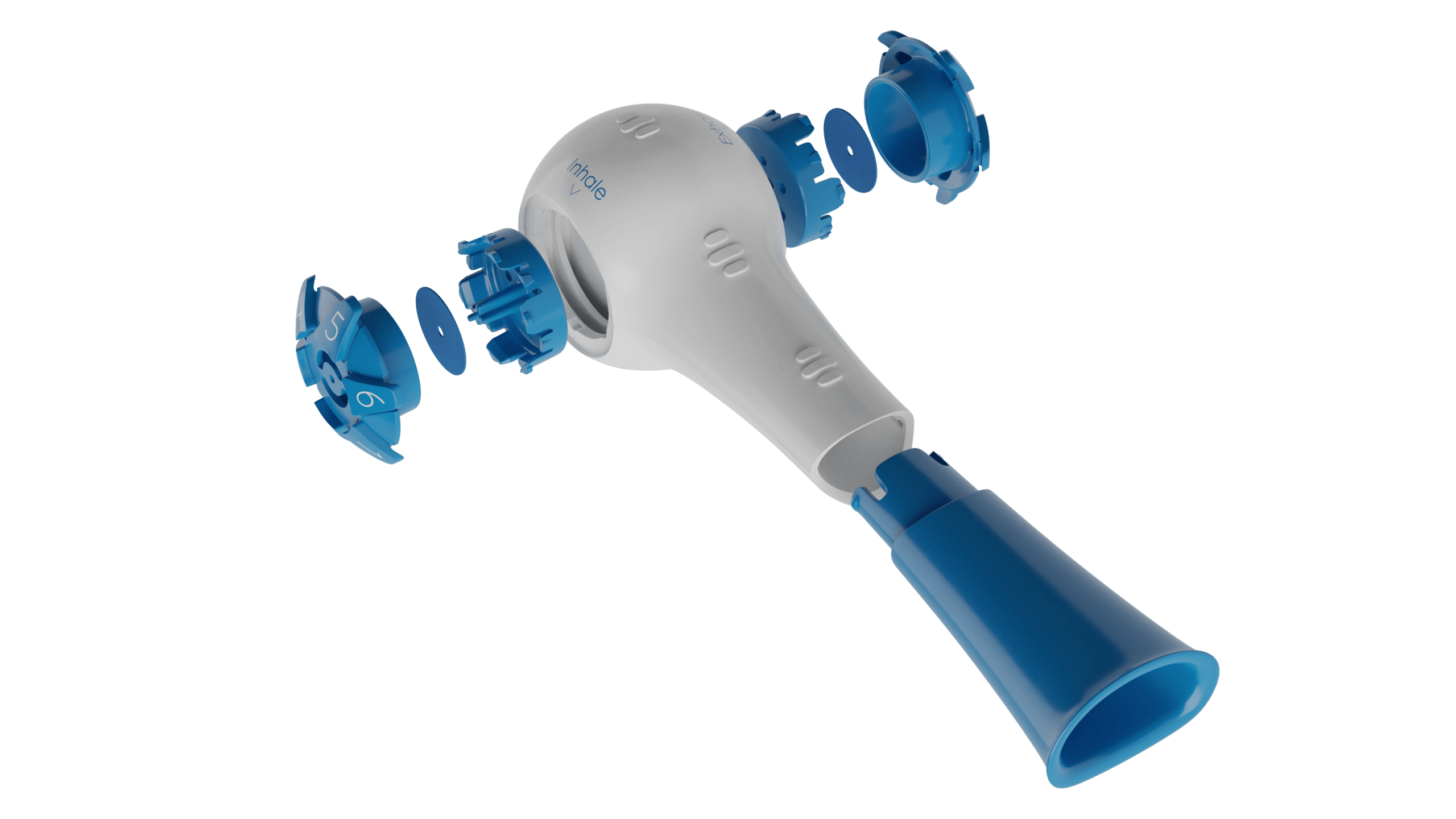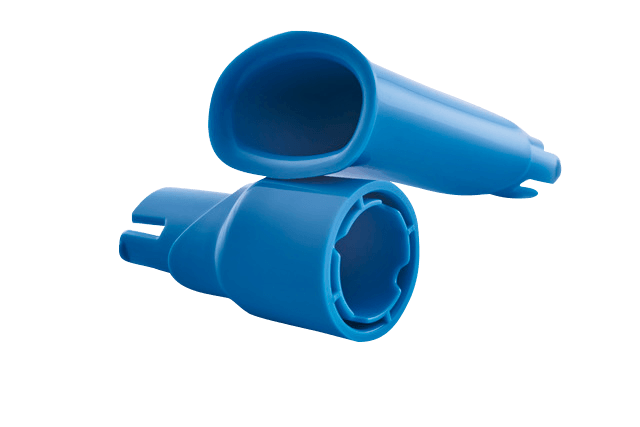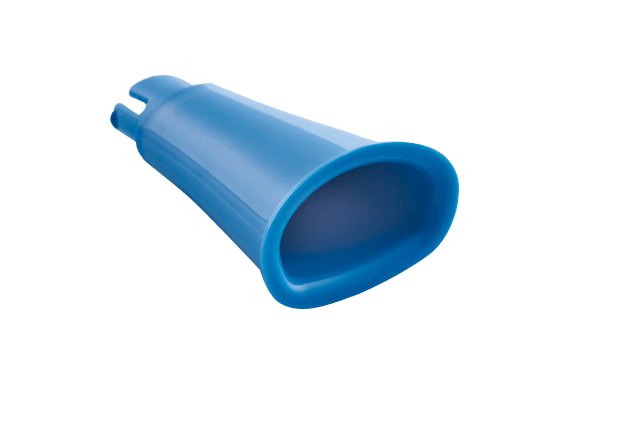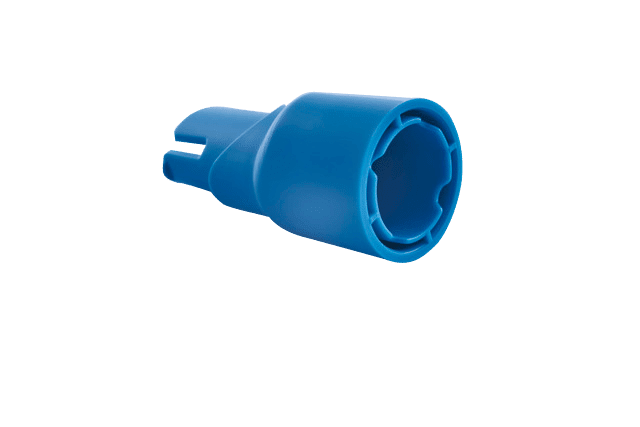THE BREATHER MOUTHPIECE

UNIQUE FEATURES & BENEFITS
-
Easier grasp for patients with compromised lip or cheek strength
-
Reduced risk of air leakage due to tighter lip seal
-
Encourages symmetrical labial posturing – may reduce asymmetry
-
Emphasizes protrusion
-
Stimulates muscle network around the lips (obicularis oris)
-
May increase lip and cheek strength during RMT
-
May increase muscle fibers of the compromised flaccid cheek

SCIENTIFICALLY ENGINEERED MOUTHPIECE
The novel mouthpiece of The Breather was designed to assist patients with compromised labial and buccal motion or strength. Grasping the larger mouthpiece with the lips will be easier and also prevent potential air leakage that may occur with a smaller mouthpiece.
Asymmetry of labial and buccal musculature is fairly common in stroke patients and the larger Breather mouthpiece will encourage symmetrical labial posturing as patients hold the mouthpiece between the lips. This positioning of the lips activates the muscle network and promotes symmetrical muscle recruitment.
The larger mouthpiece may also assist in increasing labial and buccal strength due to tightening and protrusion of the obicularis oris/buccinator as lips grasp the mouthpiece during the performance of Breather repetitions. Forced air flow through the cheeks may also strengthen muscle fibers of compromised flaccid cheeks.
As the pressure required to tightly seal the lips around the mouthpiece is lower than for other mouthpieces, most patients will find this mouthpiece to be more comfortable during RMT, supporting training adherence and improving outcome and benefits.

ALTERNATIVE MOUTHPIECE
Each Breather comes with a 15 to 22mm alternative mouthpiece.
People with smaller mouths may find the alternative mouthpiece more comfortable. The alternative mouthpiece’s design also allows the Breather to be attached to different apparatuses if approved by your clinician. Contact us at [email protected] to be directed to someone for more information about the mouthpiece and alternative mouthpiece.
IMPORTANT NOTE: You must consult with your clinician and get approval before attempting to connect the alternative mouthpiece to any apparatus.
